Dysplasia of the hip joints is a violation of the musculoskeletal function resulting from underdevelopment of the hip joints, which requires immediate medical correction.
Contents
- How to treat hip dysplasia in infants and older children?
- Gymnastics for dysplasia of hip joints in children. LFK for hip dysplasia, video
- Video: Gymnastics for hip dysplasia in children
- Children's massage for hip dysplasia, video
- Video: Children's massage for hip dysplasia
- Hip dysplasia, physiotherapy
- Widespread swaddling for hip dysplasia video
- Video: How to swaddle to avoid dysplasia
- Tire for hip dysplasia in children
- Video: How to pick and use correctly ByHow to choose and correctly use Vilnius Bus
- Aspiration for hip dysplasia in children
- Video: How to choose and correctly use Pavlik's Stiff
- Operation for hip dysplasia
- How to treat hip dysplasia in children: advice and feedback
- Video: Dr. Komarovsky about dysplasia of the hip joints
"Dysplasia" - a diagnosis that is quite often, like a bolt from the blue, is heard in the orthopedic office at the first examinatione babies. Parents of the child usually do not even know about the existence of this disease and its possible consequences.
IMPORTANT: Hip dysplasia - inferiority, lag in the development of the joint, capable of improper or inadequate treatment lead to subluxation and dislocation of the hip. Depending on the severity, there are 3 degrees of dysplasia: 1 - pre-acute, 2 - subluxation, 3 - dislocation.
Parents can discover the development of dysplasia in a newborn baby themselves, even before visiting a trauma doctor. Disturbing symptoms are:
- visual shortening of one leg
- asymmetry or a different amount of wrinkles on the legs or under the buttocks
- click sound in the thigh or knee
- incomplete hip extension
The pediatric orthopedist should confirm or disprove the suspicions of the parents by reading the results of an ultrasound or an X-ray.
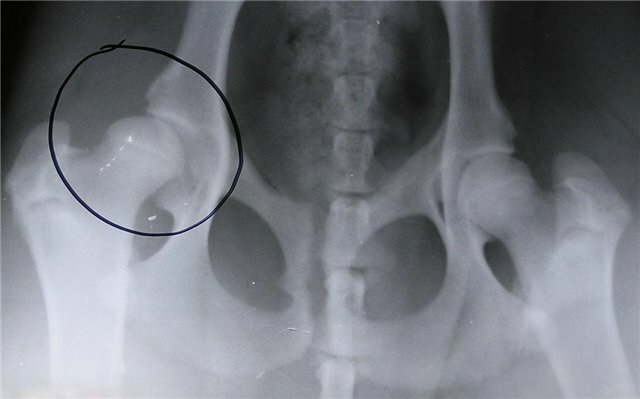
If the doctor prescribes treatment, it should be urgently carried out, following all recommendations.
How to treat hip dysplasia in infants and older children?
Treatment of dysplasia in infants is simple and does not cause discomfort to the child. Depending on the degree of dysplasia, which is determined by ultrasound or X-ray results, the doctor can prescribe to the child:
- physiotherapy
- massage
- compresses with warm paraffin on the hip joint area
- wide swaddling, use of larger diapers
- medicinal electrophoresis with calcium
- wearing special orthopedicadaptations( Pavlik's stirrups, Freik's pillow, Becker's panties, Gniewkowski's apparatus)
These activities are aimed at long-term retention of the knifeto the baby in the withdrawn bent position or their movement at a certain angle and can be assigned both in the complex and separately.
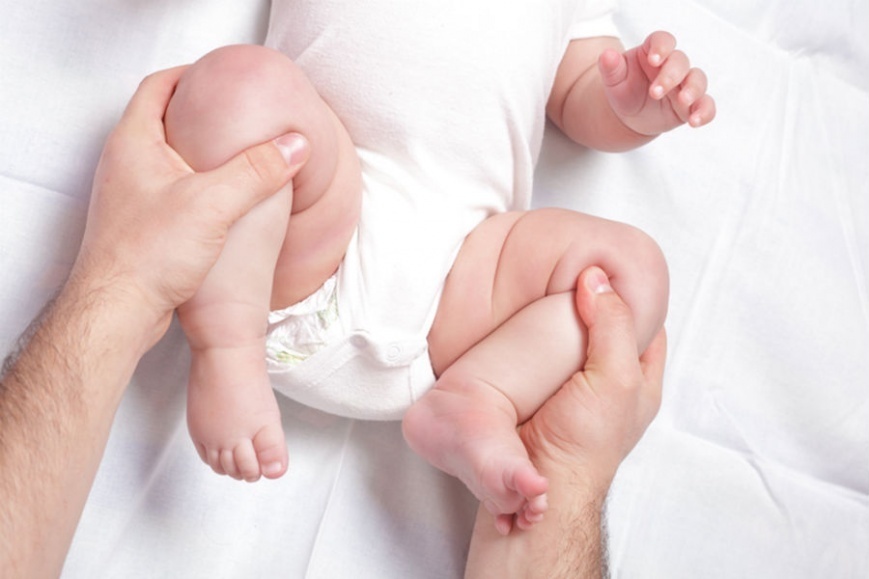
IMPORTANT: If the dysplasia is detected in time and the necessary treatment is carried out, the disease will forever recede and will never be felt again. In cases where parents do not make any effort to eliminate dysplasia in the child, the pathology progresses and takes on complicated forms. As a result, the child may noticeably limp when walking, or will not be able to walk at all.
Treatment of dysplasia in older children is long, complex and involves a number of disadvantages. For a long time to limit the movement of an adult child is very difficult, and this is necessary to fix the joint in the correct position. Often, such children can be helped only through surgical intervention.
Gymnastics for hip dysplasia in children. LFK for hip dysplasia, video
Physiotherapy( LFK) for the treatment of dysplasia in children can be carried out by parents. Despite the fact that all the movements of the exercises are very simple, with regular repetition they quickly give a good result:
- Foot-off .The child lies on his back, on a hard surface. Mom gently flexes the legs of the baby in the knees and lifts in the hip joints. From this position, the legs are smoothly bred to the sides, trying to touch the bent knees to the surface. Repeat 5 - 6 times
- Flexion of straight legs. The starting position of the child is the same. Mom, holding the even legs behind the heels, raises them as high as possible, trying to reach the head, 5 - 7 times
- Raising the legs from the head .In the sides, the straight legs of the child are maximally taken away, as close as possible to the head, 5-7 times
- Straight leg removal .The child is still on the back. Mom aligns the lowered legs and spreads them to the sides, 7 - 8 times
- "Frog" .Child on the tummy. Mom flexes the legs in the knees and hip joints in such a way that the knees touch the surface. Kid's posture resembles frog pose, hold for about 10 seconds, repeat 5 to 7 times
- Touch with heels .The initial position of the child is a "frog".Mom connects the heels together and gently pulls them to the buttocks. Repeat 5 - 7 times
- Stops on the foot .Child on the abdomen. Mom pulls to the level of the pelvis in turn each leg bent at the knee, and puts it on the foot. Repeat 5 times for each leg
Video: Gymnastics for hip dysplasia in children
IMPORTANT: You can conduct classes with your child at any time of the day, most importantly, in good spirits, do not want to sleep or eat. The complex can be repeated 2 to 4 times a day. All movements should be very neat, smooth. It is unacceptable for a child to feel discomfort or pain.
Orthopedist may also recommend other exercises.
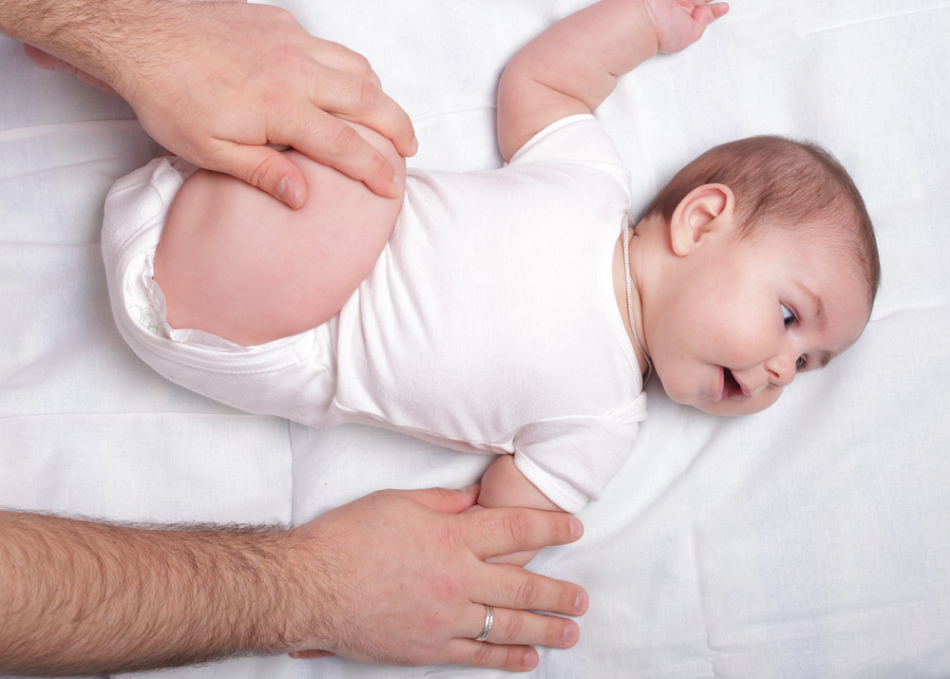
Children's massage for hip dysplasia, video
Massage takes an important place in a complex of procedures aimed at combating hip dysplasia in children. Massage should be done by a professional masseur, but if desired, parents can learn from the specialist basic movements and perform massage themselves.
Massage movements are divided into preparatory and local. Preparatory movements - strokes, slides on the entire surface of the body, are necessary for a smooth transition to more intense actions.
After a slight warm-up, smooth soft movements change to rubbing, capable of affecting the muscles. Begin rubbing from above and gradually pass into the gluteal region, where an intensive massage of the affected joint is performed.
IMPORTANT: The duration of one massage session should not exceed 25 minutes, of which the first 5 minutes are allocated for warming up and the total impact. If the child during the massage behaves restlessly, cries or breaks out, you need to stop all actions and consult an orthopedist. Perhaps, when performing massage movements, mistakes were made.
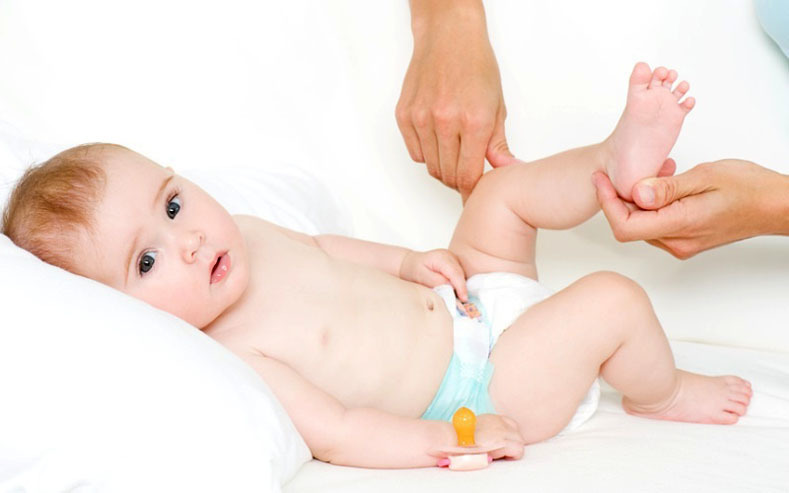
There are a number of contraindications for performing gymnastic exercises and performing massage for a child:
- heart defect
- hernia
- body temperature increased
- ORVI
IMPORTANT: For achieving the effect and fixing the result achieved, it is necessary to hold 2 to 3 massage courses consisting of 12 -15 sessions, with an interval of 1 month.
Video: Pediatric massage for hip dysplasia
Hip dysplasia, physiotherapy
Effective in the treatment of dysplasia in children, drug electrophoresis. Usually the orthopedist appoints 7-10 sessions of electrophoresis with calcium. During this procedure, the drug is transferred to the hip joints by electric current through the metal plates.
IMPORTANT: Electrophoresis sessions do not give the child pain or discomfort. The baby feels only a slight tingling in the area of exposure.
The duration of one electrophoresis session does not exceed 15 minutes. During this time, liquid calcium is supplied to the affected joint, which acts solely on it and does not affect other organs and systems of the child's body.
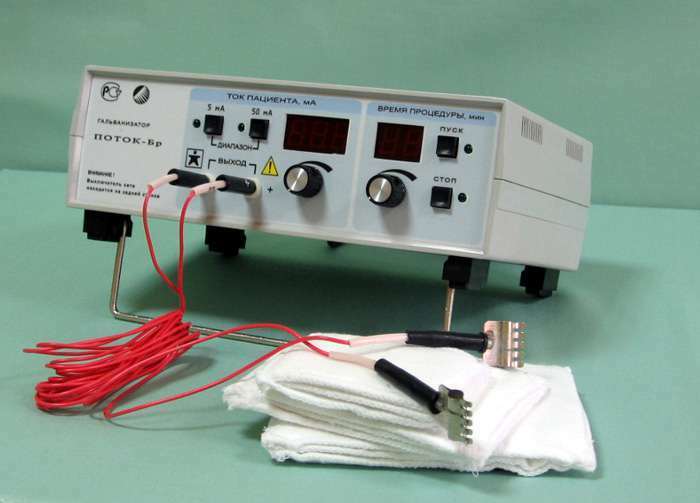
IMPORTANT: Contraindications to electrophoresis procedures are poor blood coagulation in the child, as well as the presence of tumorous diseases, bronchial asthma, infectious disease and wounds in the places of application of the plates.
Widespread swaddling for hip joint dysplasia videos
Wide diapering is used both to treat mild degree of dysplasia and to prevent its development in infants. This method is used for children from birth to six months. Its action consists in establishing the correct ratio of the femoral head to the acetabulum and prolonged fixation of this position. It gives good results if treatment was started at an early stage of the disease.
IMPORTANT: Wide swaddling, unlike special orthopedic devices, does not restrict the baby in movements. In addition, this method of swaddling has a calming effect on the child.
Wide diapering is performed as follows:
- Spread out a thin light diaper on a changing table
- Thick thick diagonal folded diaper spread over a thin
- Fold another thick large diaper so that it forms a 20 × 20cm square and set aside
- Childin the diaper, put on these diapers
- Bend the knees in the lap of the kid, take it to 90 ° C
- . Finish the baby's thighs with the ends of the diaper-triangle, and point the bottom corner to the navel
- Diaper-kvaprepared earlier, lay between the legs of the child
- Fix the tight diapers well, wrapping the baby's body with the lowest diaper
- Loose the ends of the light diaper under the top edges of the
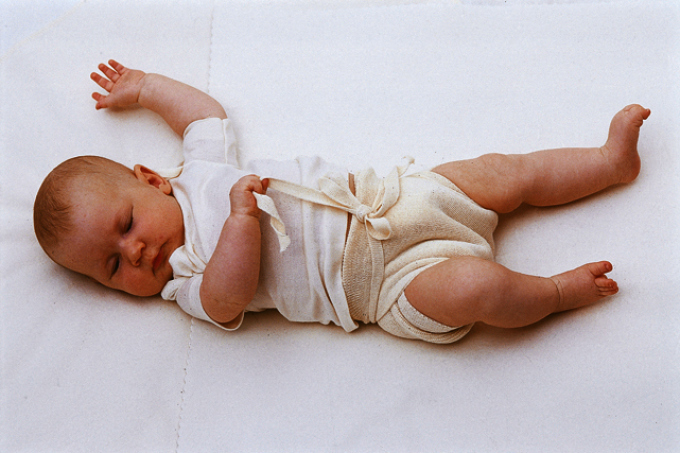
. The posture in which the child is wound is thus most favorable for the proper development of the hip joints.
Video: How to swaddle to avoid dysplasia
Tire for hip dysplasia in children
Orthopedic tires for treating hip dysplasia in children are devices that can fix and hold the legs for a long time in a certain position. They are somewhat different in design. This or that type of tire is prescribed by an orthopedist, depending on the severity of the disease and the age of the child.
The tire( pillow) of the FASKA is prescribed for children 1 - 9 months. The time of wearing and the size of the pillow of Freik is determined by the orthopedist. Outwardly it resembles a hard roller with soft edges, which is located between the legs of the child and is fixed with ties and stickers on the baby's chest.
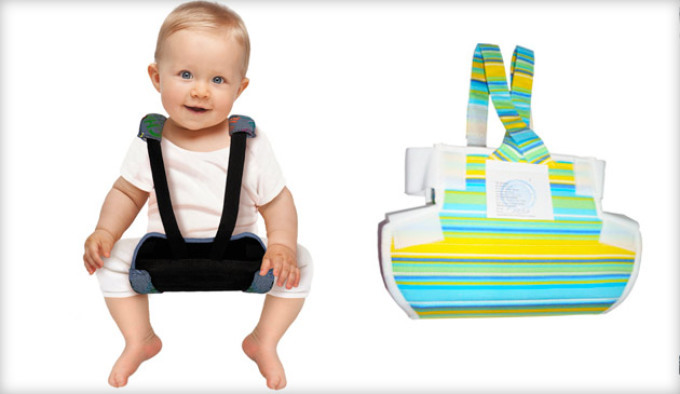
Video: How to choose and properly use the Freck Pillow
The Vilnius tire is a metal spacer with leather cuffs. The size of the tire is adjusted with a special screw. The legs are threaded in. There are 3 standard sizes of Vilensky tires:
small( dilution by 16 - 23 cm)
medium( 21 - 33 cm)
large( 33 - 50 cm)
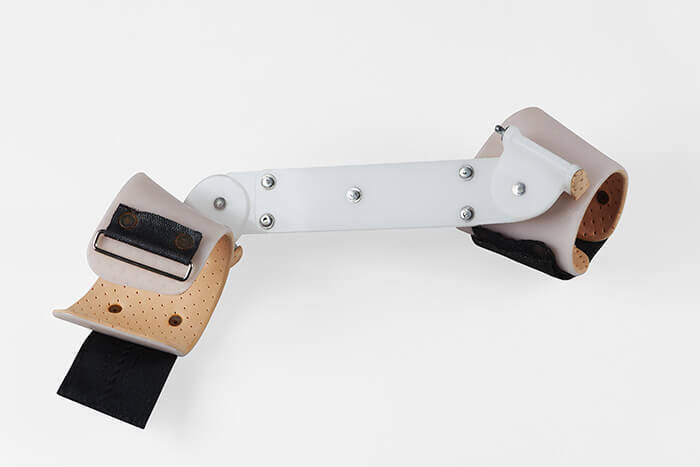
Individual tire manufacturing according to exact measurements of the child.
Video: How to choose and correctly use Vilnius Bus
Strokes for hip dysplasia in children
Pavlik's stirrups, as well as previous orthopedic devices, are named after their creator. For the treatment of dysplasia in children have been successfully used since 1944.A distinctive feature of stirrups is the possibility of leg movement, but all of them are strictly limited to the so-called "safe" zone. There is no rigid fixation. The stirrups of Pavlik are comfortable to use. Parents can easily replace a baby diaper, without removing them.
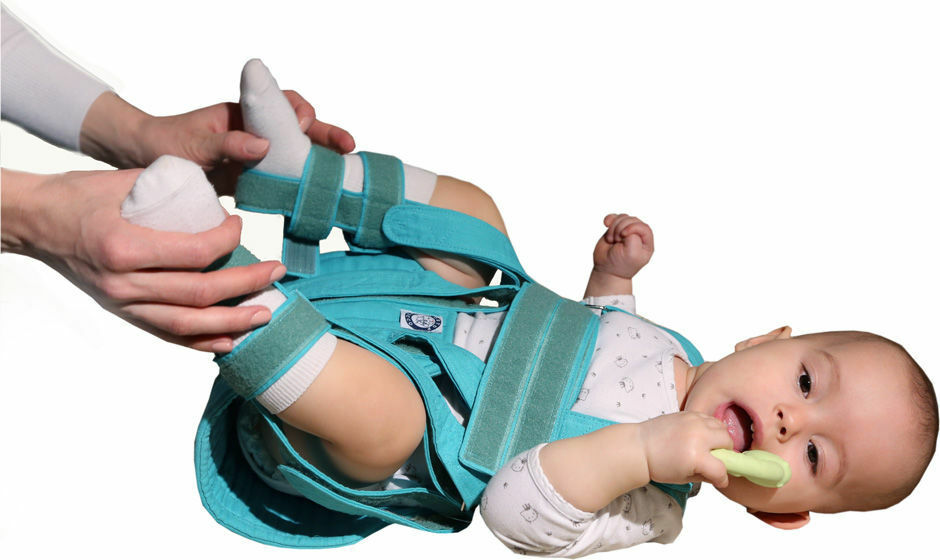
Usually, to achieve positive results in treatment, doctors recommend a round-the-clock wearing of Pavlik stirrups for 5 to 15 weeks. The control of the child's health is always performed every day by the orthopedist. As the child grows, the doctor adjusts the tension of the belts.
IMPORTANT: Improper operation of stirrups can lead to complications and further deformation of the thigh. Also possible complications in the form of injuries of the brachial plexus and paralysis of the femoral nerve.
Video: How to choose and correctly use Pavlik's Stiff
Operation for hip dysplasia
When dysplasia is diagnosed in an older child and traditional methods no longer help or if the treatment prescribed by a doctor does not bring the desired effect, surgery is performed.
There are several types of operations for the removal of hip dysplasia:
- closed reduction - the operating doctor with certain manipulations returns the femoral head to the acetabulum
- open reduction - the surgeon moves the femoral head to a specific position and simultaneously divides and lengthens the tendons
- femoral( rotational) osteotomy is a two-stage operation providing a stable position of the femur. In the first stage, the upper part of the femur is destroyed, on the second stage, the femoral bone is rotated to ensure its correct position relative to the acetabulum. The new position is fixed with metal plates
- osteotomy of the pelvis - acetabular recess with bolts and grafts
- tenotomy - lengthening of the tendon surgically
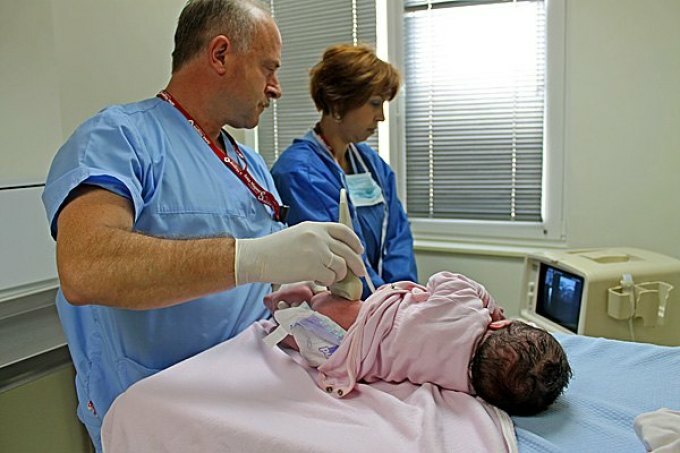
After the surgical intervention the child is hospitalized for several days. The result of a successful operation to eliminate hip dysplasia is the child's soon return to normal life without restriction of his movements.
How to treat hip dysplasia in children: advice and feedback
Olga about the pillow of Freik: "My daughters-twins were diagnosed with dysplasia in the first month of life. The orthopedist prescribed the pillows of Freik. The most interesting thing is that during the treatment the daughters were absolutely not capricious, and even slept quietly in their shinki at night. I accustomed them to cushions gradually. On the first day they wore them for an hour, in the second - for three hours. On the third day I left my daughters in the pillows of Freik for 12 hours. If the children experienced discomfort, I did a relaxing massage for them. Thanks to this wonderful adaptation, both my daughters are absolutely healthy today. "
Elena: " In our experience I can say: the earlier the dysplasia of the joints is diagnosed, the easier and faster it will be to treat it. When the son was 2.5 months, based on the results of ultrasound, the orthopedist diagnosed him: dysplasia of 1-2 degrees. At the consultation of the orthopedist, we were, because the baby had asymmetrical creases on the legs. Our main treatment was massage and gymnastics. In addition, we passed the course of electrophoresis procedures( 12 sessions).After 2 months from the beginning of treatment, ultrasound was repeated. I was very pleased with his results. My child is absolutely healthy! That's how we managed to quickly defeat dysplasia without the use of tires, struts and other devices. "
Oksana: " My son was diagnosed with dysplasia only 10 months, although before that we had examinations at 1, 3 and 7 months. My son already walked well when he was plastered. The child had hysterics and shock. Yes, and my husband, too. After 3 months, the plaster was removed. Instead, his son was given stirrups for 6 months. Then there was a massage and a course of electrophoresis with calcium. Now, finally, all our suffering is over. The child is healthy and this is the most important thing. "
It is very important for parents who treat children from hip dysplasia accurately to fulfill all the prescriptions of an orthopedic doctor, because this disease can not pass by itself. Consequences of lack of treatment may include lameness, spinal curvature, osteochondrosis, coxarthrosis. Often, neglected children's dysplasia leads to disability in adulthood.
